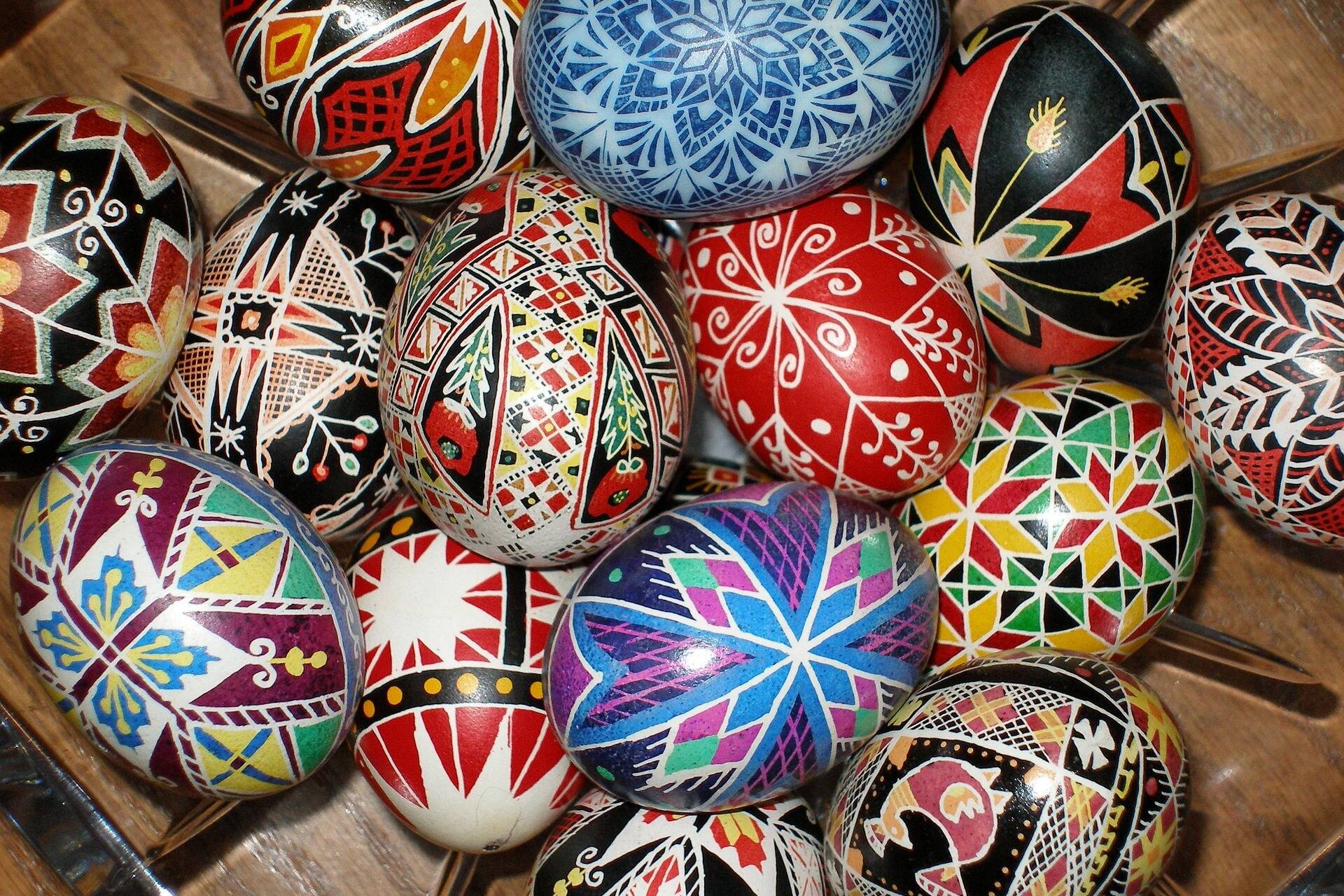A Nanaimo woman is waxing nostalgic about Ukrainian egg art in the lead-up to Easter.
Decorative Easter eggs, pysanky, from the Ukrainian word pysaty (to write), date back to ancient times, according to Jeanne Rudy, a Nanaimo resident of Ukrainian ancestry. She was making and selling eggs at the Ukrainian Easter Bazaar at St. Michael the Archangel Ukrainian Catholic Church in Nanaimo on Saturday, April 1.
“They were around since pagan times because the egg was a very important symbol of the new season, new life, rebirth,” she said. “When the Ukrainians adopted Christianity in 988 AD, a lot of the symbols that were put on eggs also had religious significance, like a fish before would’ve meant good harvest, good fishing and then it came to represent Christ the fisherman.”
Rudy said she uses a “wax-resist process” to make the eggs and is “saving the colour with the wax.” She drains the yolk out of a hole with a device similar to a wine siphon, hooked up to her laundry sink. She uses a water-filled syringe to wash the egg’s inside as well.
“You start with the raw egg. Whatever part of the egg you want to stay white, you put wax on it, then you dip it in your next lightest dye, which might be yellow,” said Rudy. “Any part of the egg you want to stay yellow, you put wax on and then you go through your colour progression, to your darkest colour at the end and then you melt the wax off and all the colours come through.”
The process is meticulous as Rudy said she tries for the perfect egg.
“I have to go through a lot of dozens to get decent ones that are smooth, nicely shaped, you don’t see the membrane coming through and you look for cracks and things,” she said. “Sometimes people look at me like I’m picky. They’re for decorating, not eating.”
While Rudy makes eggs at Christmas for tree decorations, she said this is the true time of the year for decorative eggs, with secret dye recipes passed down through the generations.
“It was a very important ritual because they would put some (eggs) in the barn, under the hay for good milk production, in the beehives for good honey production, to the graves for deceased relatives, in their Easter basket to take to church for blessing,” said Rudy. “It was a very important role for the women in Ukraine.”
karl.yu@nanaimobulletin.com
Like us on Facebook and follow Karl on Twitter and Instagram

